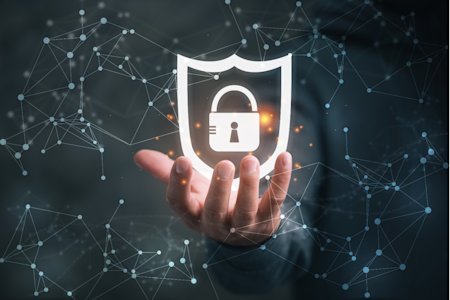As we embark on 2024, the realm of cybersecurity is poised on the brink of transformative changes. Cyber threats are not just escalating in frequency but are also becoming more sophisticated, challenging traditional security paradigms. In this rapidly evolving digital landscape, understanding the upcoming trends is a matter of foresight and a necessity for preparedness.
This article aims to unravel the top 10 cybersecurity trends and predictions for the coming year, offering insights into how technologies like Splashtop are aligning with these changes to fortify our digital defenses. From the rise of AI in cybersecurity to the increasing significance of mobile security, we'll dive deep into what the future holds for this critical field.
Try out Splashtop now to experience fast and secure remote access solutions:
Trend 1: Increased Focus on AI and Machine Learning in Cybersecurity
In 2024, AI and Machine Learning (ML) are set to play a more critical role in cybersecurity. AI's advanced data analysis capabilities are increasingly used for identifying and predicting cyber threats, enhancing early detection systems. ML algorithms are evolving to better recognize and respond to new threats, improving defensive measures over time. Expect to see AI algorithms providing real-time threat analysis in 2024, enabling faster and more accurate responses to cyber incidents. ML will likely advance to adapt and update cybersecurity protocols autonomously, reducing reliance on manual updates.
We may also witness the emergence of AI-driven security bots, programmed to independently identify and neutralize cyber threats, making network security more proactive and less reactive. These developments signify a shift towards more intelligent and autonomous cybersecurity systems, driven by the advancements in AI and ML.
Trend 2: Growing Importance of IoT Security
As 2024 unfolds, the Internet of Things (IoT) continues its exponential growth, interconnecting an ever-increasing number of devices. This expansion, however, brings with it a host of security challenges. The diversity and ubiquity of IoT devices make them attractive targets for cyberattacks, and their interconnected nature can lead to widespread vulnerabilities.
A key focus in 2024 will be on enhancing IoT security through various means. One significant advancement is expected in the development of more robust, standardized security protocols for IoT devices. This could include universal encryption standards and mandatory security certifications for new devices. Another area of enhancement could be the integration of AI and ML algorithms into IoT systems. These technologies can monitor for unusual patterns indicative of a breach, enabling quicker response to threats.
Additionally, there will likely be a greater emphasis on user education about IoT security. As users become more aware of potential risks and best practices, the overall security posture of IoT networks will improve. Finally, we might see an increase in the use of blockchain technology to decentralize and secure IoT networks, making them less vulnerable to attacks that target centralized systems. Collectively, these advancements point towards a more secure and resilient IoT ecosystem in 2024.
Trend 3: Expansion of Remote Work and Cybersecurity Implications
The expansion of remote work, a trend that has gained significant momentum, continues to shape the professional landscape in 2024. This shift necessitates a heightened focus on cybersecurity, particularly in securing remote access to work environments. Splashtop emerges as a key player in this scenario, offering robust remote access solutions that cater to the security needs of this evolving work model.
Splashtop's solutions are engineered to ensure secure and seamless access to organizational resources, regardless of the user's location. A critical aspect of Splashtop's offering is its strong emphasis on encryption and advanced authentication methods. These features are vital in protecting against unauthorized access and cyber threats that are increasingly prevalent in remote work settings.
Moreover, Splashtop's ability to provide a secure connection over various networks, while maintaining high performance and ease of use, makes it an indispensable tool for businesses adapting to remote work. This ensures operational continuity and a secure digital environment, which is crucial in the face of rising cyber threats associated with remote access. As we move through 2024, solutions like Splashtop in fortifying the cybersecurity framework for remote work become increasingly significant, highlighting their importance in a digitally connected work era.
Start your free trial of Splashtop now to get started!
Trend 4: The Rise of Quantum Computing and Its Impact on Cybersecurity
Quantum computing, a rapidly advancing field in 2024, is revolutionizing how we think about data processing and problem-solving. Unlike classical computing, which uses bits represented as 0s or 1s, quantum computing utilizes qubits. Qubits can exist in multiple states simultaneously, thanks to quantum superposition. This allows quantum computers to process vast amounts of data at unprecedented speeds, solving complex problems much faster than traditional computers.
The rise of quantum computing presents both opportunities and challenges for cybersecurity. On the one hand, its immense processing power offers the potential to strengthen cybersecurity measures. Quantum computing can enhance encryption methods, develop more sophisticated algorithms for detecting cyber threats, and efficiently manage large-scale, secure data operations.
On the other hand, quantum computing poses significant threats to current cybersecurity protocols. Its ability to quickly break traditional encryption methods, such as RSA and ECC, could leave many existing security systems vulnerable. This vulnerability highlights the urgent need for developing quantum-resistant encryption techniques, a field known as post-quantum cryptography.
As we advance into 2024, the cybersecurity landscape will need to evolve rapidly to harness the benefits and mitigate the risks presented by quantum computing. This includes upgrading current encryption methods and preparing systems to be resilient against the advanced capabilities of quantum technologies.
Trend 5: Evolution of Phishing Attacks
Phishing attacks have long been a persistent threat in the cybersecurity world, and in 2024, they continue to evolve in sophistication and effectiveness. Modern phishing attacks have become adept at bypassing traditional security measures, using more personalized and technically advanced tactics to deceive users. In the face of these advanced phishing attacks, robust authentication systems are key to enhancing security.
Solutions like Foxpass play a critical role in this regard. Foxpass can bolster defenses against phishing by implementing strong, multi-factor authentication (MFA) systems. MFA requires users to provide two or more verification factors to gain access to a resource, making it much harder for attackers to gain unauthorized access, even if they have tricked a user into revealing one set of credentials. Additionally, Foxpass's role can extend to the management of access privileges, ensuring that users have the minimum necessary access to perform their tasks. This principle of least privilege can limit the potential damage caused by compromised credentials. Foxpass's ability to integrate with existing systems and offer detailed access logs provides an additional layer of security. By monitoring and analyzing access patterns, it can help identify unusual activities that may indicate a phishing-induced breach. As phishing techniques continue to evolve, the importance of incorporating advanced authentication solutions like Foxpass becomes ever more vital in safeguarding systems and data.
Trend 6: Enhanced Focus on Mobile Security
In 2024, as mobile devices become increasingly integral to both personal and professional life, the focus on mobile security has intensified. The enhanced reliance on mobile devices for various tasks, including remote work, financial transactions, and personal communications, makes them attractive targets for cyber threats. This scenario underscores the necessity for robust mobile security solutions.
Splashtop has responded to this growing need by offering secure mobile access solutions. Its platform is designed to provide secure and seamless remote access from mobile devices to computers or networks. Key features include strong encryption protocols, ensuring that data transmitted between devices remains protected from unauthorized interception or access. Moreover, Splashtop's mobile solutions incorporate multi-factor authentication and session logging features, further enhancing security. These features are crucial in preventing unauthorized access and monitoring for any suspicious activity that may occur during a remote session.
Additionally, Splashtop's emphasis on user-friendly interfaces ensures that enhanced security does not come at the cost of convenience. Users can safely access their work or personal environments from their mobile devices without navigating complex security procedures. As mobile device usage continues to rise, the role of solutions like Splashtop in providing secure mobile access becomes increasingly vital. Their ability to blend high-level security with ease of use positions them as a key player in addressing the mobile security challenges of 2024.
Trend 7: Zero Trust Security
The concept of Zero Trust security has gained significant momentum in 2023, evolving from a niche approach to a fundamental aspect of cybersecurity strategy. At its core, Zero Trust operates on the principle of "never trust, always verify." Unlike traditional security models that focus on securing the perimeter, Zero Trust assumes that threats can exist both outside and inside the network.
In a Zero Trust model, every access request, regardless of its origin or the network it’s on, is treated as a potential threat. This requires rigorous identity verification, strict access controls, and continuous monitoring of network activities. Implementing Zero Trust involves a comprehensive approach encompassing various aspects of cybersecurity, including user authentication, endpoint security, and least-privilege access.
One of the key benefits of Zero Trust is its effectiveness in mitigating the risks posed by insider threats and lateral movement of attackers within a network. As organizations increasingly adopt cloud services and remote work models, the relevance of Zero Trust security becomes more pronounced, offering a flexible and adaptive approach to securing diverse and distributed IT environments.
The transition to a Zero Trust framework in 2024 represents a paradigm shift in cybersecurity, focusing on continuous verification and minimal access rights to reduce vulnerabilities and enhance overall network security.
Trend 8: Cybersecurity Skills Gap and Education
In 2024, the cybersecurity sector continues to grapple with a significant challenge: the skills gap. As cyber threats become more sophisticated, the demand for skilled cybersecurity professionals surges. However, there is a noticeable shortage of individuals equipped with the necessary skills and knowledge to effectively combat these evolving threats. This gap poses a risk not only to individual organizations but also to global cyber infrastructure.
To address this issue, a variety of initiatives have been put in place. Educational institutions are expanding their cybersecurity curricula, offering specialized degrees and certifications designed to equip students with the latest knowledge and skills in cyber defense. These programs increasingly focus on practical, hands-on training, preparing students for the real-world challenges they will face in cybersecurity.
Additionally, professional development and continuous learning are becoming integral parts of a cybersecurity career. Organizations and industry bodies offer various training programs, workshops, and seminars to help current professionals stay abreast of the latest cybersecurity trends, tools, and techniques. These programs are often tailored to cover specific aspects of cybersecurity, such as network security, threat intelligence, or incident response.
Moreover, there is a growing emphasis on public-private partnerships in cybersecurity education. Businesses are collaborating with educational institutions to develop training programs that are directly aligned with industry needs. These partnerships are not only beneficial for students, who gain relevant and up-to-date skills, but also for the industry, which gains access to a workforce that is better prepared to tackle current and future cyber challenges. As we advance through 2024, these educational and training initiatives play a crucial role in narrowing the cybersecurity skills gap, ultimately leading to a more robust and resilient digital ecosystem.
Trend 9: Blockchain and Cybersecurity
As we progress through 2024, blockchain technology is increasingly being recognized for its potential to significantly enhance cybersecurity measures. Blockchain, at its core, is a decentralized ledger technology known for its inherent security features like immutability, transparency, and resistance to tampering. These characteristics make it an appealing option for securing digital transactions and protecting data from cyber threats.
One of the primary ways blockchain is enhancing cybersecurity is through its ability to prevent data tampering. Once data is recorded on a blockchain, it cannot be altered without the consensus of the network, making it nearly impossible for hackers to manipulate. This feature is particularly useful for securing sensitive data, such as personal identity information, financial transactions, and critical infrastructure data. Blockchain is also being utilized to create more secure and decentralized identity management systems. By storing identity data on a blockchain, individuals and organizations can have greater control over who accesses their information, reducing the risk of identity theft and fraud.
Looking forward to the rest of 2024, blockchain's predicted to play a more integral role in securing Internet of Things (IoT) devices. Integrating blockchain into IoT networks allows each device to operate as a secure, independent node, making the entire network more resilient to attacks that typically exploit centralized security weaknesses. Furthermore, blockchain-based smart contracts are expected to see increased use in automating and securing digital agreements. These self-executing contracts can enhance security in various online transactions, ensuring compliance and reducing the risk of breaches.
In summary, as blockchain technology continues to mature in 2024, its role in cybersecurity is expected to expand, offering innovative solutions to secure digital data, manage identities, and protect IoT networks, thus fortifying the digital landscape against evolving cyber threats.
Trend 10: Cybersecurity Insurance Becoming Mainstream
In 2024, cybersecurity insurance has become a mainstream component of business risk management strategies. As cyber threats grow in complexity and frequency, organizations are increasingly turning to cybersecurity insurance to mitigate financial risks associated with data breaches and cyber-attacks. However, the cost of this insurance is significantly influenced by the organization's cybersecurity posture.
Using established cybersecurity solutions like Splashtop can have a direct impact on reducing cybersecurity insurance costs. Splashtop's secure remote access solutions enhance an organization's defense against cyber threats, particularly in remote work scenarios. By implementing robust encryption, multi-factor authentication, and comprehensive access logs, Splashtop strengthens the security infrastructure, reducing the likelihood of successful cyber attacks. Insurers often assess an organization's risk level based on their security measures; hence, having strong defenses in place can lead to more favorable insurance premiums.
Furthermore, the integration of solutions like Splashtop demonstrates to insurers that an organization is proactive about its cybersecurity. This proactive stance is often viewed positively by insurance providers, as it suggests a lower risk profile. In essence, by investing in reliable cybersecurity solutions, organizations not only enhance their security but also position themselves for potentially lower cybersecurity insurance costs, reflecting their commitment to robust risk management practices.
Strengthen Your Cybersecurity: Seamlessly Integrate Splashtop for Superior Protection
With cybersecurity threats becoming more sophisticated, it’s crucial to fortify your defenses by integrating secure remote access solutions like Splashtop into your cybersecurity framework. Splashtop offers end-to-end encryption, multi-factor authentication, and device authentication, ensuring that your remote connections are protected against unauthorized access and data breaches.
By implementing Splashtop, organizations can maintain robust security across their distributed workforces, safeguarding sensitive information while enabling seamless remote work. This integration not only strengthens your cybersecurity posture but also enhances operational efficiency, allowing your team to work securely from any location.
In addition, Splashtop’s centralized management tools provide IT administrators with full visibility and control over remote sessions, allowing for proactive monitoring and quick response to potential threats. This proactive approach to cybersecurity is essential for businesses aiming to stay ahead of emerging risks in today’s digital landscape.
By choosing Splashtop, you are taking a significant step towards building a more resilient and secure IT environment, ensuring that your business is well-prepared to face the challenges of 2024 and beyond.
Stay Ahead of Cyber Security Threats in 2024 with Splashtop Secure Remote Access
As we've explored the top cybersecurity trends and predictions for 2024, it's clear that the digital landscape is evolving rapidly, bringing new challenges and necessitating stronger defenses. One key solution to these challenges is Splashtop, offering robust and secure remote access capabilities that are crucial in today's interconnected world.
Are you ready to elevate your organization's cybersecurity readiness? Experience the power and reliability of Splashtop firsthand. This is your opportunity to see how Splashtop can seamlessly integrate into your cybersecurity strategy, providing enhanced security and peace of mind in an era of ever-increasing digital threats.
Don't wait for a breach to happen. Be proactive in safeguarding your digital assets and data. Sign up for a free Splashtop trial today!





